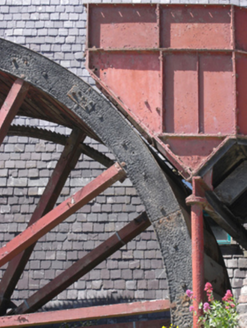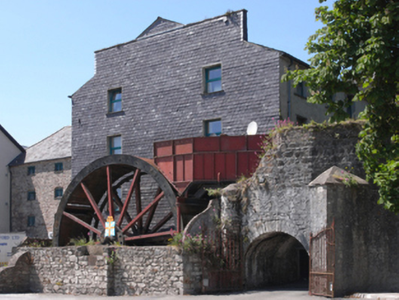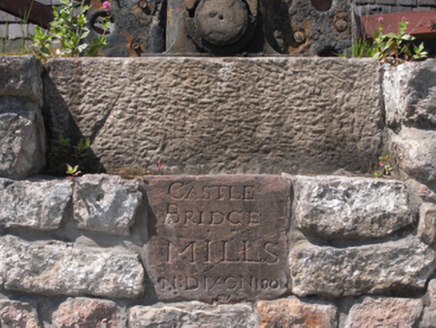Survey Data
Reg No
15614018
Rating
Regional
Categories of Special Interest
Architectural, Technical
Original Use
Mill (water)
In Use As
Apartment/flat (converted)
Date
1805 - 1810
Coordinates
305600, 126883
Date Recorded
27/08/2007
Date Updated
--/--/--
Description
Mill complex, dated 1806, including: Attached four-bay four-storey mill on a rectangular plan with two-bay full-height side (east) elevation. Renovated, 1994-6, to accommodate alternative use. Pitched slate roof with clay ridge tiles, and replacement uPVC rainwater goods on cement rendered eaves. Part repointed walls (ground floor) with red brick flush quoins to corners; slate hung surface finish (remainder). Camber- or segmental-headed central door opening with repointed red brick voussoirs framing glazed timber panelled double doors. Square-headed window openings (upper floors) with shallow sills, and concealed dressings framing replacement casement windows; Attached nine-bay four-storey malt store on a rectangular plan. Renovated, 1994-6, to accommodate alternative use. Hipped gabled slate roof with clay or terracotta ridge tiles, and cast-iron rainwater goods on red brick header bond stepped eaves retaining cast-iron downpipes. Part repointed walls with red brick flush quoins to corners centred on cast-iron "Pattress" tie plates. Series of three elliptical-headed openings (ground floor) with repointed red brick block-and-start surrounds framing replacement fittings. Square-headed window openings in camber- or segmental-headed recesses (upper floors) with shallow sills, and part repointed red brick block-and-start surrounds framing timber boarded fittings behind wrought iron bars. Set in relandscaped grounds.
Appraisal
A mill complex erected by Nicholas Dixon (----) of Castlebridge House (see 15614007) representing an important component of the industrial heritage of County Wexford. Having been successfully adapted to accommodate an alternative use, the elementary form and massing survive intact together with quantities of the original or sympathetically replicated fabric, both to the exterior and to the interior including not only a partial slate hung surface finish widely regarded as an increasingly endangered hallmark of the architectural heritage of County Wexford, but also a high breastshot waterwheel pinpointing the engineering or technical dexterity of a mill making an imposing visual statement in a rural village setting presently (2007) undergoing extensive "suburban" redevelopment.





